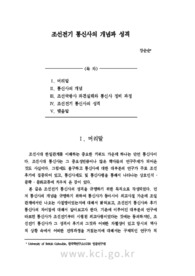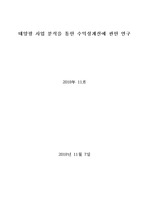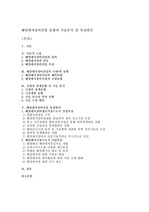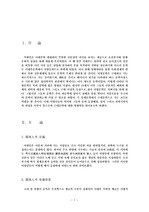

PARTNER
검증된 파트너 제휴사 자료
조선전기 통신사의 개념과 성격 (The Conception and Characteristics of Tongshinsa in the Early Chosun Period)
37 페이지
최초등록일 2025.05.18
최종저작일
2010.10

-
미리보기
서지정보
· 발행기관 : 전북사학회
· 수록지 정보 : 전북사학 / 37호 / 39 ~ 75페이지
· 저자명 : 장순순
초록
The aim of this study is to analyze the conception and characteristics of Tongshinsa(通信使) in the early Chosun period. First, 'Tongshinsa', or 'Shinsa', was created as a delegation dispatched from Chosun to nother countries. This relationship called Kyorin(交隣) during the early Chosun period. Later, Tongshinsa was only dispatched to Edobakuhu(江戶幕府), Japan. During the early Chosun period, the Chosun Gukwangsa(朝鮮國王使) tried to dispatch twenty-four times, but only went to Kyoto(京都), Japan nineteen times. This envoy had several names: Tongshingwan(通信官), Hyeresa(回禮使), Hyeregwan(回禮官), Chogwan(朝官). However, the names of these envoys were used differently, according to changes in Chosun´s diplomatic policy toward Japan. Later, the name of Tongshinsa was chosen. The dispatch of Chosun Gukwangsa is divided by four periods. The envoys of the first period had been dispatched for the purpose of Bobing(報聘) and Hyere(回禮), These envoys showed appreciation, courtesy, and gratitude for the repression of Waegu(倭寇) and the return of Korean prisoners who were captured. The names of the envoys were Hyeresa(回禮使), Hyeregwan(回禮官), and Chogwan(朝官). The Second period of Chosun Gukwangsa was called Tongshinsa. The purpose of this period of displomacy was the celebration of the new Shogun(將軍) and to show condolence for the passing of the old Shogun(將軍). The third period envoy was called Thongshinsa, and was sent to observe Japan's domestic atmosphere. Although the envoys of the fourth period were also named Tongshinsa, at that time it had very different characteristics from the original envoy. During the early Chosun period, Tongshinsa did not have standard rules and regulations to reach an agreement between Chosun and Japan, unlike the later Chosun period. Ashikaga Bakuho(足利幕府) didn't ask Tongshinsa to come nor inform the Chosun Dynasty about the death of the old Shogun. Despite this, the reasons why the Chosun government dispatched Tonshinsa were creating a foreign policy emphasizing the relationship of Kyorin(交隣) with neighboring countries; preventing the expansion of problems related to Waegu(倭寇) and ensuring security by creating a path for negotiation to solve pending issues between Chosun and Japan. Secondly, unlike the later Chosun period, all costs for the detachment of Tongshinsa were paid for by the Chosun government. Thirdly, Tongshinsa in the early Chosun period had political and diplomatic exchanges between Chosun and many Daimyo(大名), or regional leaders, including Bakuhu. Later, Chosun diplomacy only focused on Bakuhu, this point are very important characteristics of the early Chosun period. Eventually, the Chosun government was disappointed by the rude diplomatic attitudes of Ashikaga Bakuhu and the weakness of Japan's central government. During the early Chosun Dynasty, the Chosun government had lost its influence with Japan. After that, the Chosun government stopped dispatching Tongshinsa.영어초록
The aim of this study is to analyze the conception and characteristics of Tongshinsa(通信使) in the early Chosun period. First, 'Tongshinsa', or 'Shinsa', was created as a delegation dispatched from Chosun to nother countries. This relationship called Kyorin(交隣) during the early Chosun period. Later, Tongshinsa was only dispatched to Edobakuhu(江戶幕府), Japan. During the early Chosun period, the Chosun Gukwangsa(朝鮮國王使) tried to dispatch twenty-four times, but only went to Kyoto(京都), Japan nineteen times. This envoy had several names: Tongshingwan(通信官), Hyeresa(回禮使), Hyeregwan(回禮官), Chogwan(朝官). However, the names of these envoys were used differently, according to changes in Chosun´s diplomatic policy toward Japan. Later, the name of Tongshinsa was chosen. The dispatch of Chosun Gukwangsa is divided by four periods. The envoys of the first period had been dispatched for the purpose of Bobing(報聘) and Hyere(回禮), These envoys showed appreciation, courtesy, and gratitude for the repression of Waegu(倭寇) and the return of Korean prisoners who were captured. The names of the envoys were Hyeresa(回禮使), Hyeregwan(回禮官), and Chogwan(朝官). The Second period of Chosun Gukwangsa was called Tongshinsa. The purpose of this period of displomacy was the celebration of the new Shogun(將軍) and to show condolence for the passing of the old Shogun(將軍). The third period envoy was called Thongshinsa, and was sent to observe Japan's domestic atmosphere. Although the envoys of the fourth period were also named Tongshinsa, at that time it had very different characteristics from the original envoy. During the early Chosun period, Tongshinsa did not have standard rules and regulations to reach an agreement between Chosun and Japan, unlike the later Chosun period. Ashikaga Bakuho(足利幕府) didn't ask Tongshinsa to come nor inform the Chosun Dynasty about the death of the old Shogun. Despite this, the reasons why the Chosun government dispatched Tonshinsa were creating a foreign policy emphasizing the relationship of Kyorin(交隣) with neighboring countries; preventing the expansion of problems related to Waegu(倭寇) and ensuring security by creating a path for negotiation to solve pending issues between Chosun and Japan. Secondly, unlike the later Chosun period, all costs for the detachment of Tongshinsa were paid for by the Chosun government. Thirdly, Tongshinsa in the early Chosun period had political and diplomatic exchanges between Chosun and many Daimyo(大名), or regional leaders, including Bakuhu. Later, Chosun diplomacy only focused on Bakuhu, this point are very important characteristics of the early Chosun period. Eventually, the Chosun government was disappointed by the rude diplomatic attitudes of Ashikaga Bakuhu and the weakness of Japan's central government. During the early Chosun Dynasty, the Chosun government had lost its influence with Japan. After that, the Chosun government stopped dispatching Tongshinsa.참고자료
· 없음태그
-
자주묻는질문의 답변을 확인해 주세요

꼭 알아주세요
-
자료의 정보 및 내용의 진실성에 대하여 해피캠퍼스는 보증하지 않으며, 해당 정보 및 게시물 저작권과 기타 법적 책임은 자료 등록자에게 있습니다.
자료 및 게시물 내용의 불법적 이용, 무단 전재∙배포는 금지되어 있습니다.
저작권침해, 명예훼손 등 분쟁 요소 발견 시 고객센터의 저작권침해 신고센터를 이용해 주시기 바랍니다. -
해피캠퍼스는 구매자와 판매자 모두가 만족하는 서비스가 되도록 노력하고 있으며, 아래의 4가지 자료환불 조건을 꼭 확인해주시기 바랍니다.
파일오류 중복자료 저작권 없음 설명과 실제 내용 불일치 파일의 다운로드가 제대로 되지 않거나 파일형식에 맞는 프로그램으로 정상 작동하지 않는 경우 다른 자료와 70% 이상 내용이 일치하는 경우 (중복임을 확인할 수 있는 근거 필요함) 인터넷의 다른 사이트, 연구기관, 학교, 서적 등의 자료를 도용한 경우 자료의 설명과 실제 자료의 내용이 일치하지 않는 경우
“전북사학”의 다른 논문도 확인해 보세요!
-
경기전 태조어진 봉안행차(奉安行次)의 재현을 위한 기초연구 32 페이지
This article has two purposes. The first is to restore the ceremonial march to enshrine the portrait of King Taejo in Gyeonggijeon based on the historical experience in Joseon Dynasty, and the second .. -
東學의 敎祖伸寃運動과 斥倭洋 26 페이지
Although Donghak was continually suppressed by the government after the foundation, it made a remarkable growth after the middle of the 1880's. As a result, it developed to a force in Korean society e.. -
조선후기 李順伊의 童貞觀 형성 과정 30 페이지
Yi Sun-i, a “Korean martyr’s jewel” due to her unique religious life and faith,her letter that she wrote when she was in prison was transcribed and read by the people. As she was still young, she deci.. -
고려시대 朴恒의 生厓와 活動에 대하여 33 페이지
Park Hang's(朴恒) living period(1227~1281) was time that had achieved from the period of aggression to peace with Mongolia(蒙古), the period of Won's(元) interference and Japan conquest from the Goryeo(高麗).. -
退溪 李滉 이야기의 서사화 양상 ― 단양의 기생 杜香과 풍기의 대장장이 裵純 관련 이야기를 중심으로 ― 30 페이지
The love story of Toegye Yi Hwang and Korean geisha Doo Hyang from Danyang is beyond a typical love story but one that mellows with the grand nature of Danyang Palgyeong circa the end of the 17th cent..
찾으시던 자료가 아닌가요?
지금 보는 자료와 연관되어 있어요!
문서 초안을 생성해주는 EasyAI




